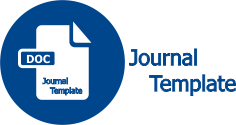Pengembangan Perangkat Pembelajaran pada Materi Asam Basa dalam Model Discovery Learning untuk Meningkatkan Motivasi dan Hasil Belajar Peserta Didik
(1) Universitas Negeri Makassar
(2) Universitas Negeri Makassar
(3) Universitas Negeri Makassar
(*) Corresponding Author
DOI: https://doi.org/10.26858/cer.v5i2.32722
Abstract
Keywords
Full Text:
PDFReferences
Anam, K. (2015). Pembelajaran Berbasis Inkuiri. Yogyakarta: Pustaka Pelajar.
Anni, Catharina Tri, dkk. (2005). Psikologi Belajar. Semarang: Universitas Negeri Semarang Press.
Anisa, Ewid Nur. (2017). Pembelajaran Discovery Learning untuk Meningkatkan Motivasi Belajar dan Penguasaan Konsep Siswa. Jurnal Pendidikan dan Pembelajaran Kimia, 6(2).
Arends, R.I. (2008). Learning to Teach, Belajar untuk Mengajar Edisi Ketujuh. Yogyakarta: Pustaka Pelajar.
Balim, A G. (2009). The Effects of Discovery Learning on Students’ Success and Inquiry Learning Skills. Eurasian Journal of Educational Research.
Budiningsih, Asri. (2005). Belajar dan Pembelajaran. Jakarta: Rineka Cipta.
Darmadi. (2017). Pengembangan Model dan Metode Pembelajaran dalam Dinamika Belajar Siswa. Yogyakarta: Deepublish.
Dalyono. (2012). Psikologi Pendidikan. Bandung: Rineka Cipta.
Dahar, R. W. (2011). Teori Belajar dan Pembelajaran. Jakarta: Penerbit Erlangga.
Danial, M., Taty Sulastry. (2016). Hubungan Antara Keterampilan Berpikir Kritis dan Metakognisi dengan Penguasaan Konsep pada Beberapa Model Pembelajran Kimia. Jurnal Chemica, 2(2), 111-126.
Dimyati & Mudjiono. (2009). Belajar dan Pembelajaran. Jakarta: PT. Rineka Cipta.
Das, Salirawati. (2004). Belajar Kimia Secara Menarik untuk SMA/MA Kelas XI. Jakarta: Grasindo.
Nurwahida, Muhammad Danial, Mansyur. (2018). Pengembangan Perangkat Pembelajaran Kimia Berbasis Discovery Learning Pada Materi Larutan Penyangga Di Kelas XI SMA. Chemistry Education Review, 2(1), 42-69.
Ridwan & Akdon. (2009). Aplikasi Statistika dan Metode Penelitian untuk Administrasi dan Manajemen. Bandung : Dewa Ruci.
Rusman. (2013). Model-Model Pembelajaran: Mengembangkan Profesionalisme Guru. Jakarta: Rajawali Pers.
Sanjaya, W. (2006). Strategi Pembelajaran. Jakarta: Kencana Prenada Media Group.
Slameto. (2010). Belajar dan faktor-faktor yang Mempengaruhinya. Jakarta: PT. Rineka Cipta.
Sudjana, Nana. (2004). Dasar -dasar Proses Belajar Mengajar. Bandung: Sinar Baru Algensido Offset.
Sugiyono. (2009). Metode Penelitian Kuantitatif, Kualitatif dan R&D, Bandung: Alfabeta.
Syamsir, M., Danial, M., & Syahrir, M. (2020). Pengembangan Perangkat Pembelajaran IPA SMP Berbasis Discovery Learning Berorientasi Meningkatkan Kemampuan Berpikir Kritis dan Hasil Belajar Peserta Didik. Chemistry Education Review. 3(2), 205-220.
Article Metrics
Abstract view : 220 times | PDF view : 59 timesRefbacks
- There are currently no refbacks.
Jurnal dipublikasikan oleh: Program Studi Pendidikan Kimia
Program Pascasarjana Universitas Negeri Makassar
Alamat JL. Bonto Langkasa Gunung Sari Makassar, 90222
Kampus PPs UNM Makassar Gedung AD ruang 406 Lt 4, Indonesia.Phone 082393643737/085145825311/085242228678
CER UNM Indexed by:

Chemistry Education Review (CER) is licensed under a Creative Commons Attribution-NonCommercial 4.0 International License.










